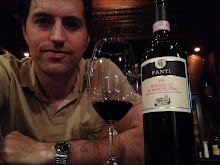Espana Espana Espana
My recent travels had me touring the Northern Wine Regions of Central and Eastern Spain. Ribera del Duero, Toro, Rioja, Terra Alta & Priorat were all truly unique from the other yet I am not sure if anyone in Spain would realize it.
“Vino Tinto, Por Favor” was pretty standard at most restaurants and Tapas bars. A dangerous phrase in a wine bar in the United States as one might get a $40+ glass of wine. Yet in Spain, they know it is House and it is going to be cheap and a small glass. It was very typical to see 7cl as a glass of wine (2.33 oz.) or what we in Texas call a shot or taste. Price range was from .80 to 1.50 Euro ($1.12 to $2.10) The Bodegas or wineries know the locals do not spend money on wines in Tapas bars and so they often make the prices very low to find themselves on Tapas Bar Chalk Boards often only featuring 15 or less wines by the glass. For a glass (7cl) of other than Vino Tinto (or the house Wine) usually ranged from $1.50 to $3.50 Euro ($2.10 to $4.20.) And these are wines like Pesquera Crianza (US - $25 - $30 Bottle or $20+ a glass.)
Each wine region was proud to feature the wine of the commune or maybe those wines were just very aggressively priced for the restaurant and bar owners.
Here are some of my impressions of the wine regions:
Toro – A small village that pretty much you could drive by in the matter of minutes. Outside the village where the vineyards are located is a dry dusty earth what appears to be vines with significant age in red rock soil. The wines are powerful yet can be tannic. It seems that in order to find these wines you might be better off searching a US Wine shop. In Valladolid, a large town in between Toro and Ribera del Duero, I found very little Toro wines.
Ribera del Duero – Soils seemed to vary greatly amongst the Ribera del Duero. Reminded me of Bordeaux with what appeared to be satellite villages amongst a larger wine region. Yet also reminded me of Tuscany as there were some rolling hills. If you ask the locals they really enjoy the Ribera del Duero wines, yet many behind closed doors think Rioja has better quality at the high-end (excluding Vega Sicilia of course.)
Rioja – Vines, Vines and more vines. It seemed that any where grapes could grow vines were planted. Some were old and some were new. I saw several younger vines book-ended by Old Vines. I started to notice olive trees here and it was a theme as we headed towards Terra Alta. Vineyards started becoming dispersed with Olive trees. Logrono was the town we stayed in which would have been the centrally located in Rioja. Wine shops here I found to have many old bottles of Rioja which were expensive and had turned because apparently Spain has yet to receive the Memo that Wine and direct sunlight don’t mix.
Terra Alta – High elevation and vines of 60-70+ years of age pretty much everywhere. Spacing is very broad and trellising almost non-existent. Betea is a village of 2,000 people in which they have there on co-op and unfortunately for the DO of Terra Alta many of these producers are using techniques that oxidize and fail to express the potential of the area. Fortunate for the consumer, these keeps wines like Portal and Ludovicus under $17 a bottle (even though they score in the 90’s by Parker on multiple vintages.)
Priorat – Another one of those towns that we only drove through versus stopping into town for further investigation. Just a stop as we headed to Bordeaux. The Licorella is truly unique and another blink and you pass it wine regions. It looks to be quite difficult to manage a vineyard and harvest must be exhausting. These wines seem to be very well respected in most of Spain, but I failed to locate a single bottle in any shop of the other major wine regions.
Spain seems a bit disorganized and maybe slightly dis-interested in attempting to really push global expansion and local education. It is quite difficult when you need a siesta in the middle of the day to stay focused on an industry. While one day they will realize that the wine potential of Spain might by synonymous with Global wine powers such as France and Italy. Until then, enjoy the massive savings on world-class old world wines.
Saturday, April 16, 2011
Subscribe to:
Post Comments (Atom)

No comments:
Post a Comment